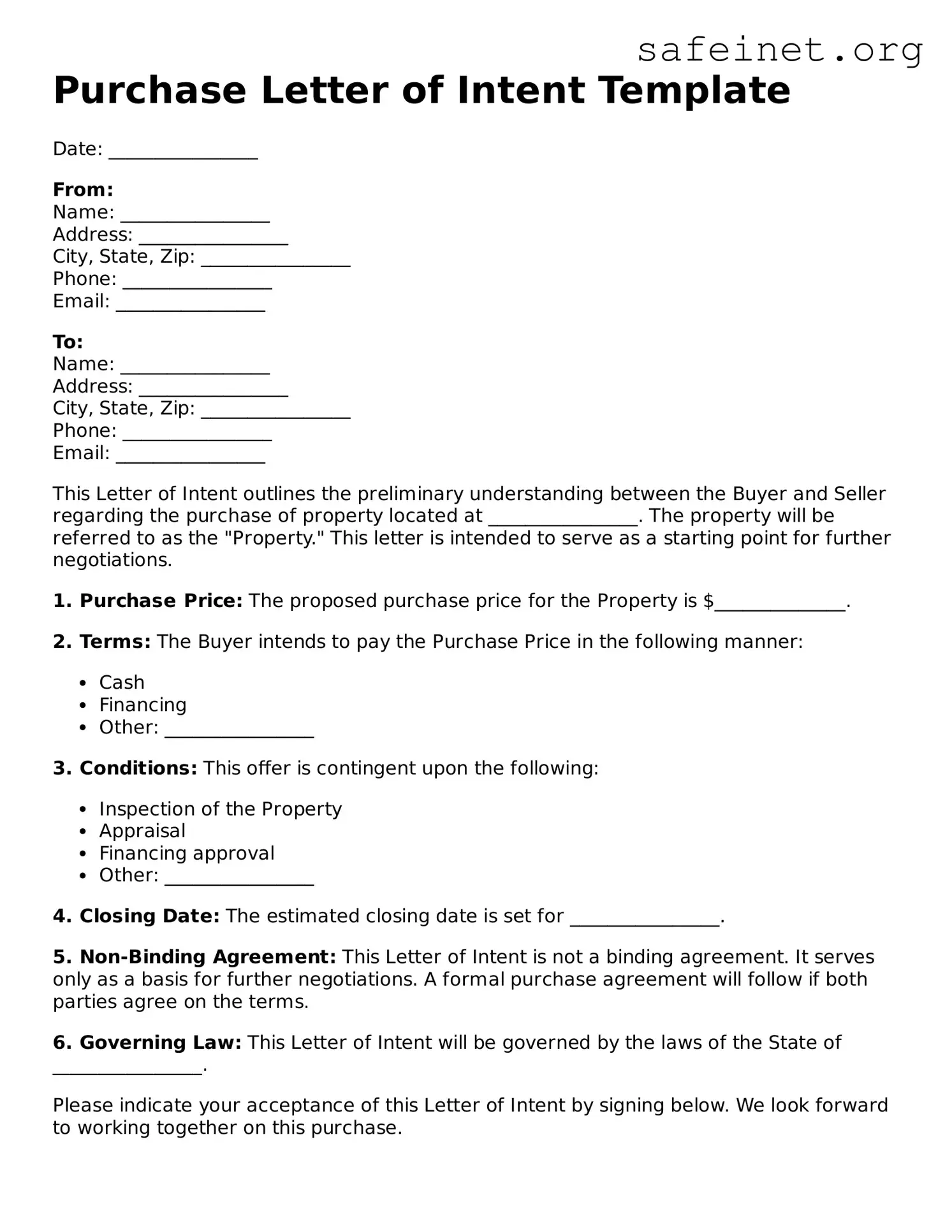What is a Purchase Letter of Intent?
A Purchase Letter of Intent (LOI) is a preliminary document outlining the intention of one party to purchase a specific asset, property, or business from another party. It usually indicates the basic terms that both parties are considering, setting the stage for a more detailed agreement later on.
Why is a Purchase Letter of Intent important?
The LOI serves several purposes. It helps to formalize the discussion between the buyer and seller, clarifying the basic terms of the proposed transaction. It can also provide assurance to both parties, showing that serious intentions are in place before moving forward with due diligence or negotiations on a formal contract.
Does a Purchase Letter of Intent create a binding agreement?
Generally, a Purchase Letter of Intent is not legally binding. Main terms like purchase price and timelines may be discussed, but the LOI typically includes a clause indicating that it is non-binding unless a definitive agreement is executed. However, parties should carefully review the document to understand their commitments.
What information should be included in a Purchase Letter of Intent?
Key components of an LOI typically include details such as the names of the buyer and seller, a description of the asset or business being purchased, the preliminary purchase price, and any conditions that must be met before finalizing the sale. It may also outline timelines for due diligence and closing the transaction.
Can a Purchase Letter of Intent be negotiated?
Yes, the terms in an LOI can and often are negotiated by both parties. This document is meant to be a starting point for discussions. Buyers and sellers may amend clauses or propose new terms until both agree on the specifics that will be included in the final purchase agreement.
Is a Purchase Letter of Intent the same as a purchase agreement?
No, a Purchase Letter of Intent is not the same as a purchase agreement. The LOI is a preliminary outline, while a purchase agreement is a formal, legally binding contract that includes all terms and responsibilities related to the transaction. Once both parties agree to the LOI, they will typically progress to drafting a detailed purchase agreement.
How long is a Purchase Letter of Intent valid?
The validity period of an LOI is generally specified within the document itself. It may range from a few weeks to several months, depending on the complexity of the transaction and the needs of both parties. If no time frame is specified, the LOI may remain valid until either party decides to withdraw or until a definitive agreement is reached.
What happens after both parties sign a Purchase Letter of Intent?
After signing the LOI, both parties typically enter a period of due diligence. This involves investigating the asset, business, or property being sold to confirm its value and assess any potential risks. Following due diligence, the parties will work to draft a purchase agreement, incorporating the agreed-upon terms from the LOI.
Do I need a lawyer to prepare a Purchase Letter of Intent?
While it is possible to prepare an LOI without a lawyer, it is advisable to seek legal counsel. An attorney can ensure that the LOI adequately protects your interests and complies with relevant laws. They can also help clarify terms and conditions, reducing the potential for misunderstandings later in the negotiation process.
